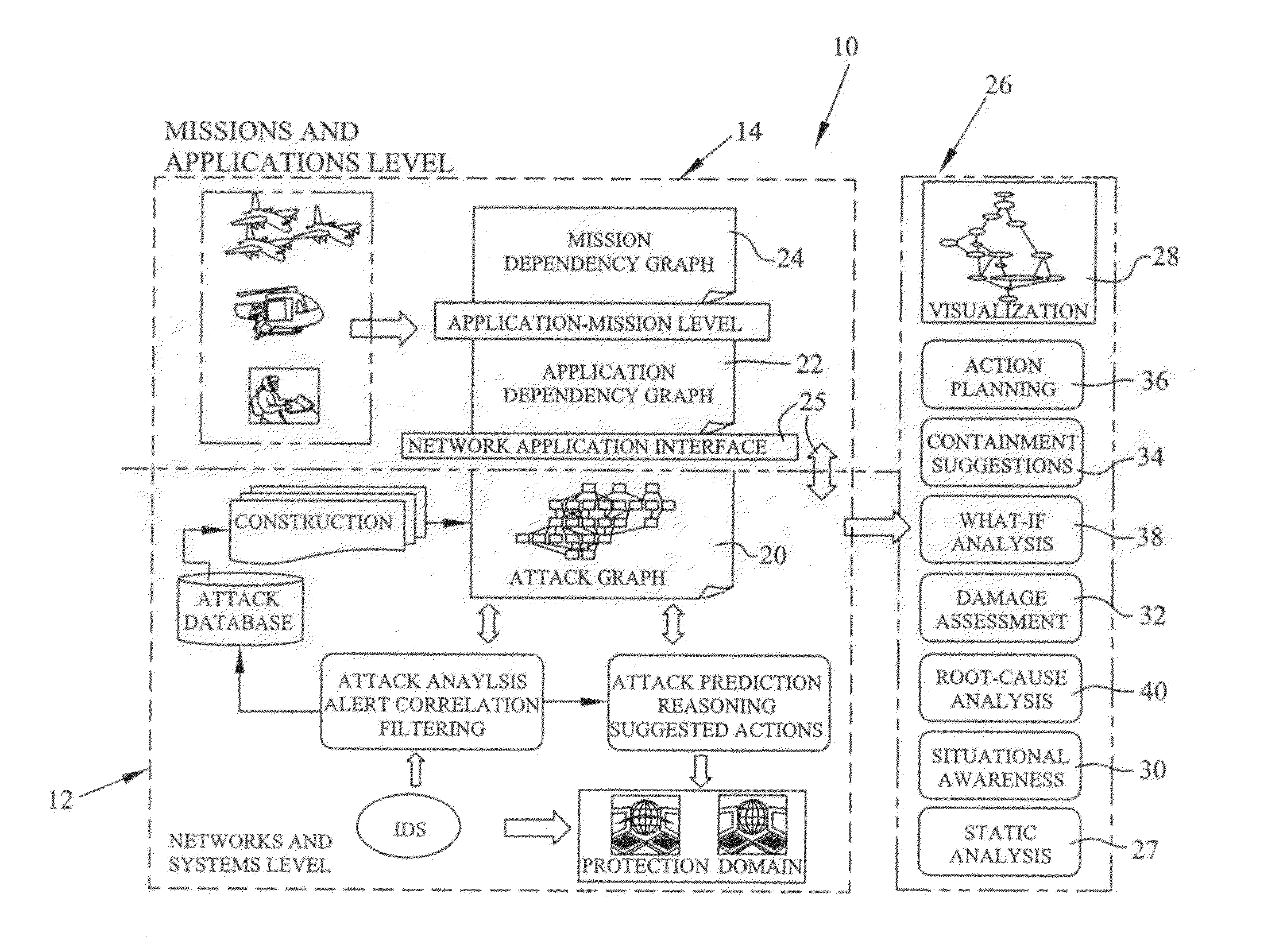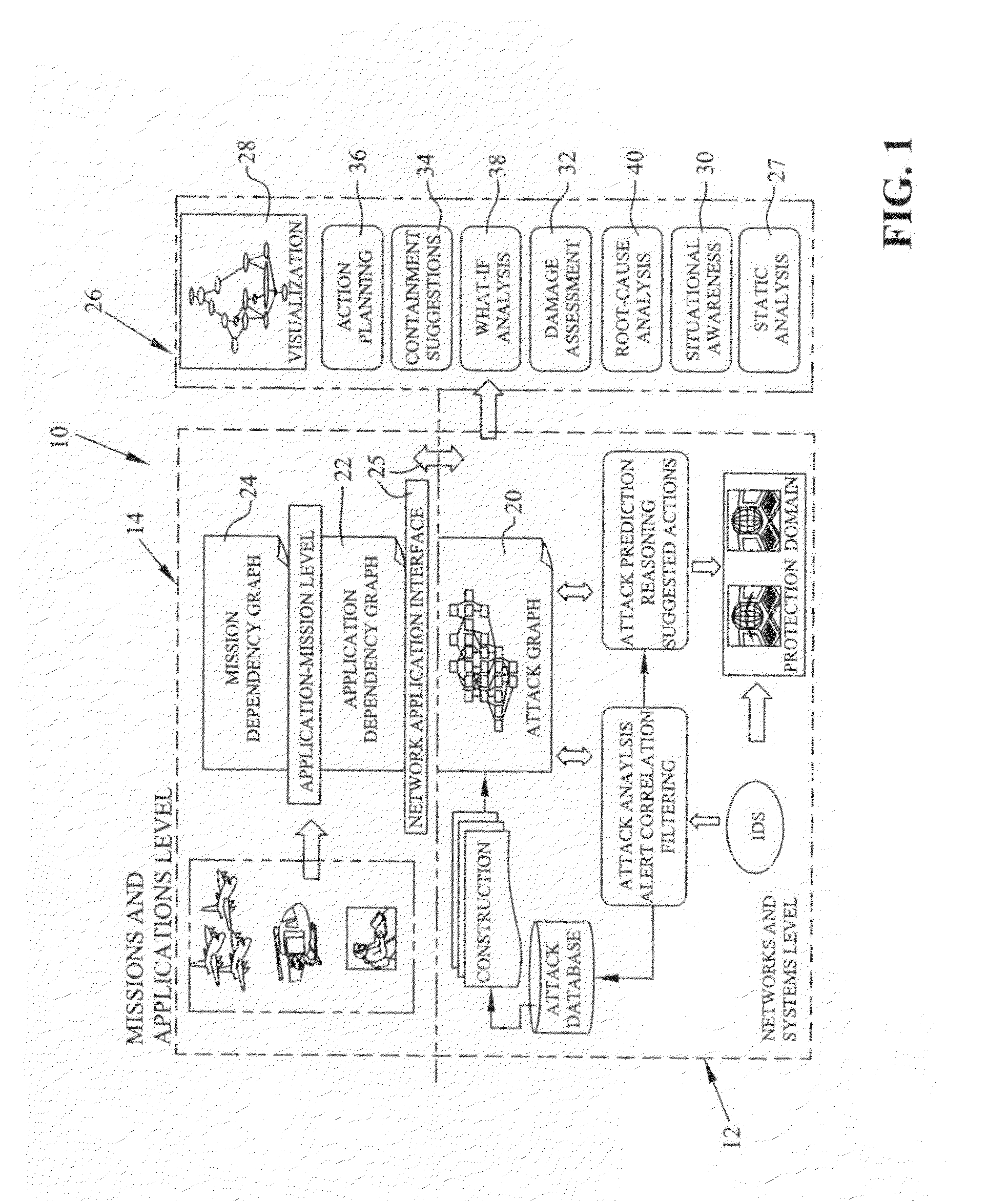Graphical models for cyber security analysis in enterprise networks
a cyber security analysis and network design technology, applied in the direction of unauthorized memory use protection, instruments, error detection/correction, etc., can solve the problems of inability to achieve such goals, lack of “action” related systems to effectively deal with enterprise network intrusion, and inconvenient use, so as to reduce redundancy and reduce redundancy. , the effect of minimizing the loss of semantic power
- Summary
- Abstract
- Description
- Claims
- Application Information
AI Technical Summary
Benefits of technology
Problems solved by technology
Method used
Image
Examples
Embodiment Construction
[0037]For the purposes of promoting an understanding of the principles of the invention, reference will now be made to the embodiments illustrated in the drawings, which are described below. It will nevertheless be understood that no limitation of the scope of the invention is thereby intended. The invention includes any alterations and further modifications in the illustrated devices and described methods and further applications of the principles of the invention, which would normally occur to one skilled in the art to which the invention relates.
[0038]Instead of using full-scale attack graphs, such as the Carnegie Mellon University attack graph, or deterministic semantics, the subject invention captures the inherent uncertainties among exploit dependencies to provide compact and scalable attack graph models rich in semantics and efficient in computation. The subject invention goes beyond static analysis of attack graphs (which the system is capable of performing), in order to mat...
PUM
 Login to View More
Login to View More Abstract
Description
Claims
Application Information
 Login to View More
Login to View More - R&D
- Intellectual Property
- Life Sciences
- Materials
- Tech Scout
- Unparalleled Data Quality
- Higher Quality Content
- 60% Fewer Hallucinations
Browse by: Latest US Patents, China's latest patents, Technical Efficacy Thesaurus, Application Domain, Technology Topic, Popular Technical Reports.
© 2025 PatSnap. All rights reserved.Legal|Privacy policy|Modern Slavery Act Transparency Statement|Sitemap|About US| Contact US: help@patsnap.com



